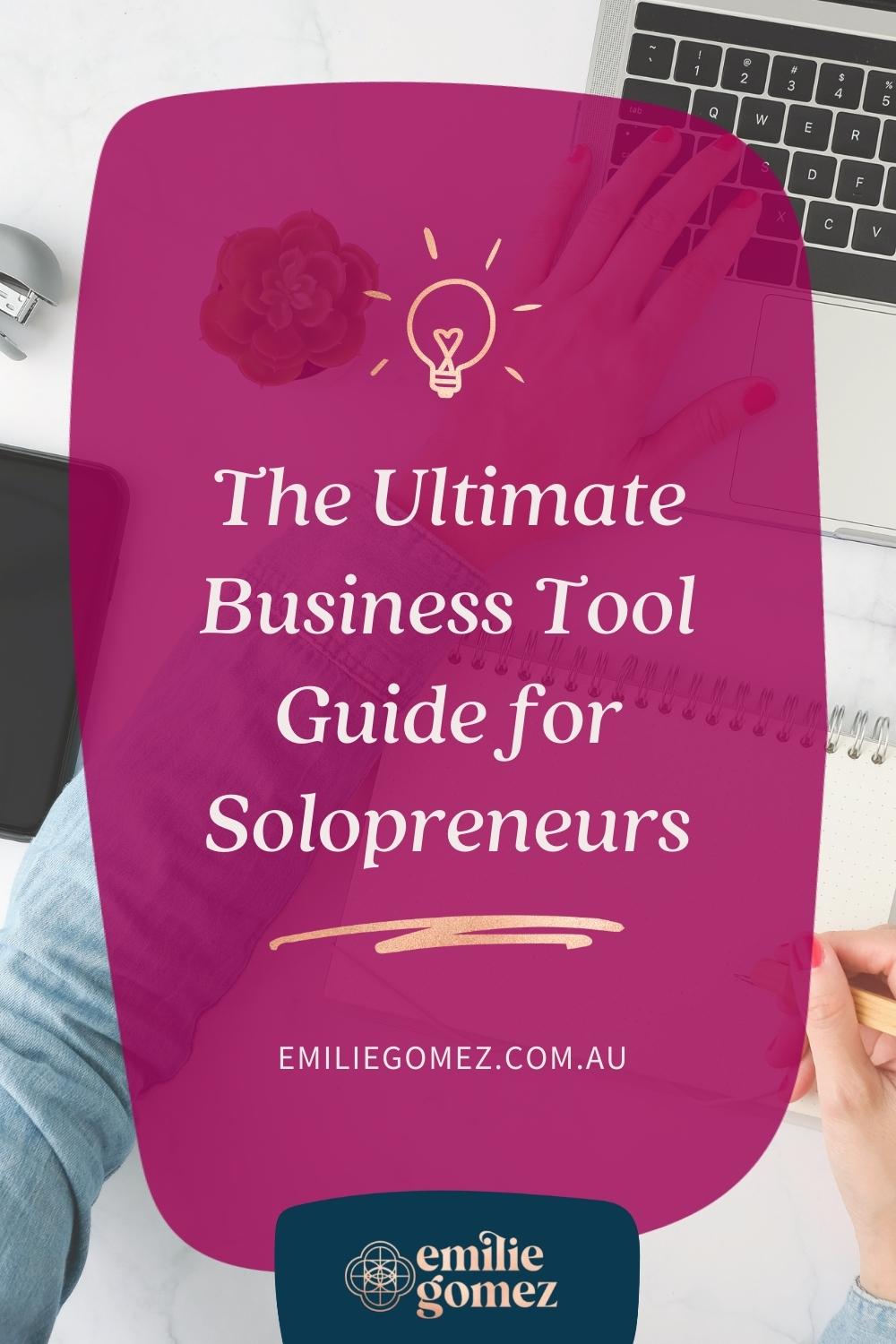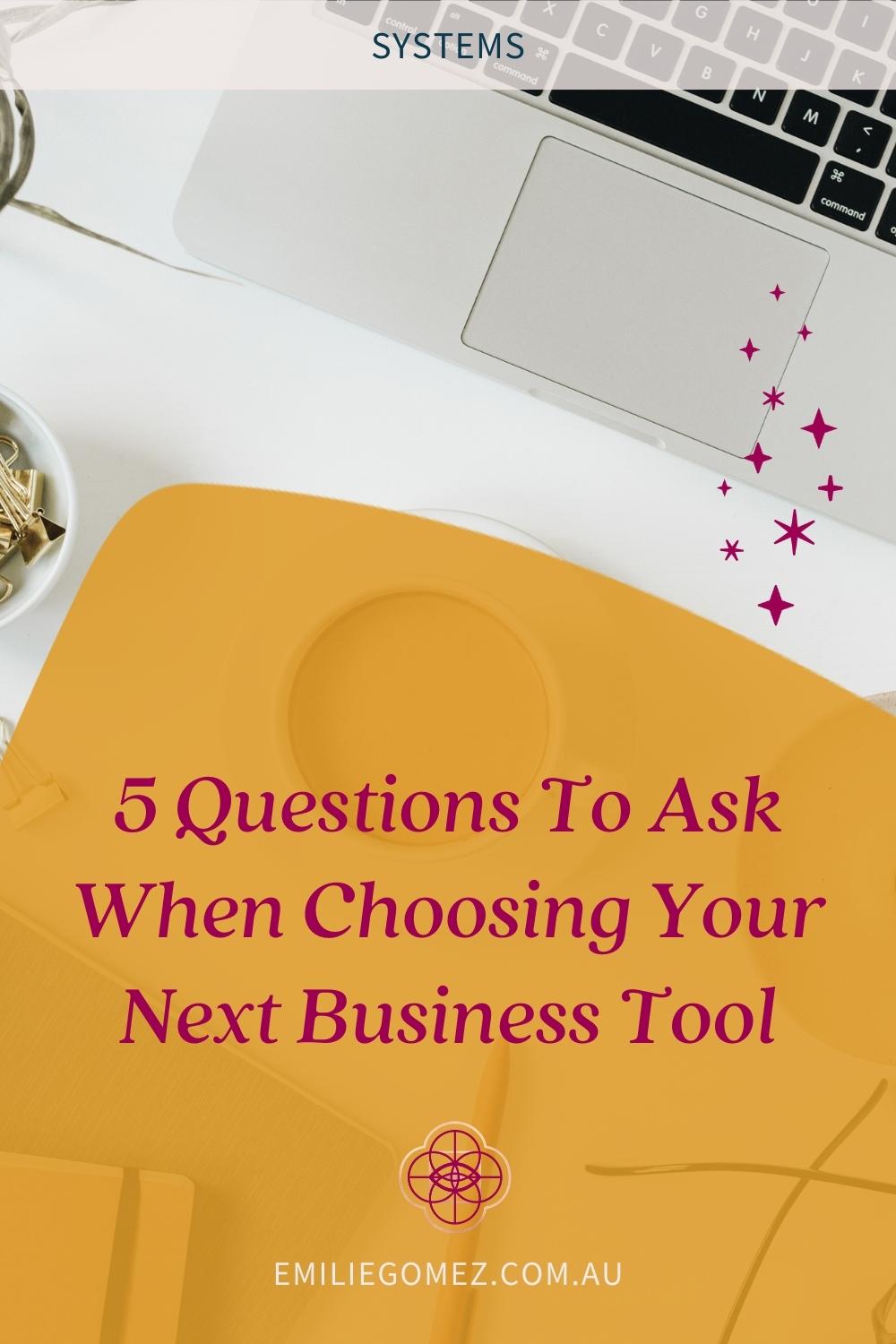This post contains affiliate links. If you sign up to an app using one of those links, I’ll get a small commission. I only recommend systems that I love and use in my business or with clients.
This article is the second instalment in a 3-part guide. If you haven’t read Part #1 yet, you can do so here.
Earlier this year, Xero, my bookkeeping platform at the time, announced another price increase. I have nothing against businesses increasing their prices, but it did annoy me in this case. It was the third increase in 2 years. Plus, I didn’t feel I was getting that much value for the amount I was paying every month.
The only reason I was using Xero is that it seems to be the platform of choice here in Australia and, naturally, was the platform my accountant recommended.
But this new price increase and the approaching end of the financial year prompted me to look for an alternative.
As I did so, I found a lot of articles about the “best” tools.
The thing is, there isn’t such a thing as the best platform (or all the other tool providers would be out of business!). What there is, though, is the right platform for you. But how do you find it?
It’s not hard to do, but I don’t have a short answer, so I’ve created a 3-part guide to help you select the right tools for your business.
In this second part, you’ll discover the questions to ask yourself before you go scout the internet for your new business software.
Q1. What’s your intention for this platform?
Let’s start at the beginning.
Why do you want a new platform to begin with?
Are you replacing an existing platform? Or have you outgrown your existing one?
How will you use this new tool in your business? Forget about what this type of software is supposed to do. Be creative. If you could have anything, how would you use it?
For example, you may want your work management platform to become your business hub, i.e. the central place from where you run your business. It’s much more than a project management platform that manages your to-do list.
Being clear about this first will help you answer the following questions and decide later, especially if you have a tie between a couple of platforms.
Q2. What do you need the platform to do?
You know how you’d like to use the tool at a high level (your intention above), but what do you need it to do specifically?
Write down a list of features your tool needs based on your intention.
For example, continuing with the example above of the work management platform, you may want:
- Task management
- Integrate with other platforms easily (here, you want to be specific and list the actual platforms it needs to integrate with). For example, Make, Acuity Scheduling.
- Customisable – ability to add and rename fields and statuses to suit your needs
- Ability to add wiki-style documents to create your SOP manual
Your intention might only give you high-level, broad strokes features. In order to be more specific, you’ll want to go through your organisational guidelines and processes and see what else you need your tool to have to support those.
For example, you may want to be able to use time blocking to manage your tasks. This means you’ll need the ability to set start and due dates.
Don’t censor yourself. Write down everything you want your new application to do. You’ll have time later to be realistic about what it can actually do.
Q3. What features are essential?
Not all the features you’ve listed above are essential or must-haves. In other words, if your tool didn’t have some of these, it’d still be OK for you to use. These non-essential features are called “nice to have”, as in “it’d be great to have them, but you can probably do without them”. This usually is because you can either get it from another tool or create an acceptable workaround. Your nice-to-haves will likely be your tie-breaker when you can’t decide between two platforms.
You may be tempted to skip this step and think, “I want everything”. Unfortunately, this isn’t realistic, and you’ll likely need to compromise. Being clear now about which features you’re happy to let go of will save you time later when you do your research.
If you’re having trouble deciding whether a feature is a must-have or a nice-to-have, ask yourself:
- If you didn’t have this feature, could you still achieve what you need easily in another way?
- If you answer No, then it’s a must-have.
Easily is the keyword here. You may be able to find workarounds for everything, but do they make your job easier? On the other hand, if you’re a perfectionist or don’t like bending the rules, you may be reluctant to look at different ways of doing things, making your must-haves list unattainable.
Must-haves are sometimes so obvious that we forget to consider them in our assessment. It’s not until much later, and often when it’s too late because we’ve already committed to a whole year, that we realise how essential they were. Here are some features that you may want to keep in mind depending on the type of platforms you’re looking to get:
- Availability in your country. E.g. Wave and HoneyBook aren’t available in Australia.
- Compliance in your country. This is especially important when it comes to financial platforms (e.g. do they provide the right reports for your tax obligations?)
- User experience (e.g. easy to navigate, intuitive)
- Integration. Will it talk to your existing tech stack, or will you need Zapier or Make?
- Provider’s ethics. What are their values? Do they have a DEI statement?

Need help keeping track of all the features you need and want?
I’ve created The Tool Selector to help do just that (and a lot more!). The Tool Selector is part of Your Profitable + Scalable Systems Toolkit.
Q4. Will this platform grow with you?
There’s such a thing as the right tool for your level of business. That level may not be income related, though. It may be dependent on factors like:
- the size of your list
- the number of active clients you have at one time
- how many new clients you onboard each month
To avoid having to constantly change platforms as your business evolves – something that you likely don’t want to do anyway – you’ll want to pick a platform that can grow with you. This is especially important for platforms such as your accounting software or project management tool. These platforms hold a lot of data you’d want to keep if you were to change.
Knowing what you’ll need in the future may be something that you find hard to predict as you don’t know how or when your business will change. However, I’m guessing you have a vision. Based on it and how things are going right now, you can answer the following questions:
- How likely is your business to change? For example, do you have an established suite of offers, or are you just getting started figuring out the best way to package what you offer?
- What features will you likely need?
- Will you have a team?
- Will they need access?
While it’s great to dream big and believe in yourself and your inevitable success, you’ll want to be realistic about where you might be in the next 12 or 24 months. Think ahead but not too far ahead. For example, one of my clients had big plans for her business and decided to invest in Kartra early on, thinking it’d save her time later. However, there were so many other things to do in her business (and life) that she never got to use it to its full potential. We ended up downgrading to a more basic email marketing platform.
A less risky approach here – as it involves less guessing of where you might be – is looking for a tool that offers multiple plans so that you can upgrade when needed. Start with the Basic plan (that covers all your must-haves) and aim for the Pro plan down the line rather than opt for an all-in-one platform from the get-go.
Q5. What’s your budget?
I’ve noticed quite a few different mindsets when it comes to investing in business tools:
- The Cautious Solopreneur. You keep chasing the free tools because money is tight, or you’re scared to invest in the wrong tool. Either way, you want to make sure you invest wisely. Free platforms are great but often limited, so you’ll likely end up having to do a lot of manual work, making your job harder than it needs to be and reinforcing your belief that tools are just a waste of money.
- The Big Believer. You believe in your inevitable success and invest heavily in all the latest platforms that multi 6 or 7-figure entrepreneurs are raving about, even though you’re not yet at that level. This introduces a level of complexity to your business that is actually hindering your success because you’re overwhelmed, and everything feels too hard.
- The Perfectionist. You think you need to have it right from the beginning, so you invest in all-in-one platforms like Dubsado without having defined your processes first. This makes your tools seem hard to use, so you don’t really use them to their full potential, stressing you out in the process because you think you’re wasting money.
While there’s nothing wrong with being cautious about where you invest your money or believing you’ll be an overnight success, it becomes an issue when it guides all your decisions, especially your financial ones.
A better approach is to look at each platform individually and decide how much you’re willing to invest in this particular case. This should be based on:
- How much you can afford now and for the next 12 months (at least). This doesn’t mean you have to spend that amount straight away, but it’ll indicate how much you can spend and if you can afford to upgrade if you need to. In other words, it’ll tell you if it’s sustainable for your business.
- How this tool will contribute to your business success. For example, ClickUp is the backbone of my business. Therefore, I don’t mind paying for the extra features because they help me be more intentionally productive and stay on top of my work.
Conclusion
In order to decide on the best platform for you and your business, you’ll want to first be clear on what you need from that tool. This will give you a list of features – some of which are essentials, while others are nice extras.
This list, along with a clear budget, will make your search a lot easier as you’ll know exactly what you’re looking for. I cover how to do your research and pick the best applications for you in the upcoming Part #3.












